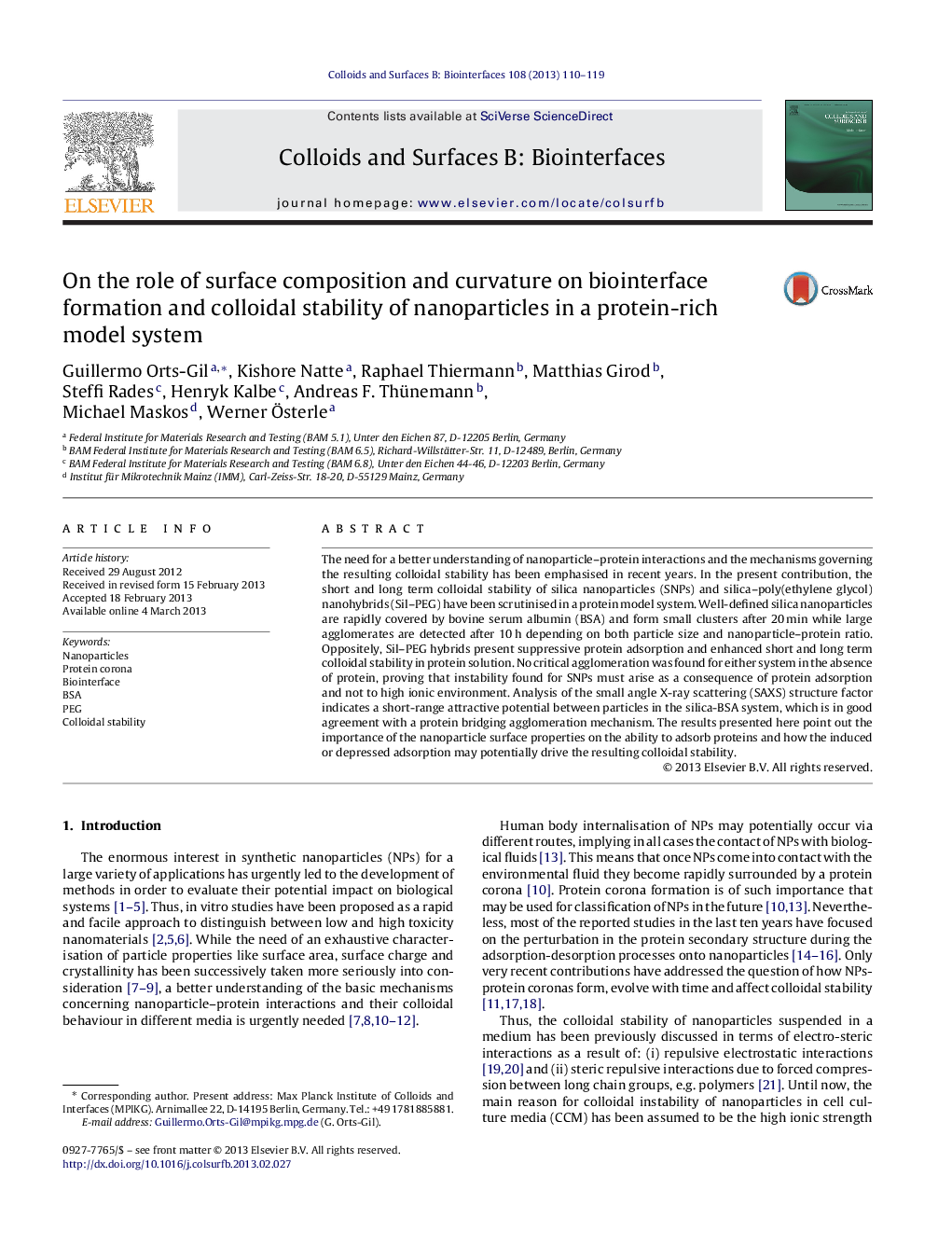| Article ID | Journal | Published Year | Pages | File Type |
|---|---|---|---|---|
| 600166 | Colloids and Surfaces B: Biointerfaces | 2013 | 10 Pages |
The need for a better understanding of nanoparticle–protein interactions and the mechanisms governing the resulting colloidal stability has been emphasised in recent years. In the present contribution, the short and long term colloidal stability of silica nanoparticles (SNPs) and silica–poly(ethylene glycol) nanohybrids (Sil–PEG) have been scrutinised in a protein model system. Well-defined silica nanoparticles are rapidly covered by bovine serum albumin (BSA) and form small clusters after 20 min while large agglomerates are detected after 10 h depending on both particle size and nanoparticle–protein ratio. Oppositely, Sil–PEG hybrids present suppressive protein adsorption and enhanced short and long term colloidal stability in protein solution. No critical agglomeration was found for either system in the absence of protein, proving that instability found for SNPs must arise as a consequence of protein adsorption and not to high ionic environment. Analysis of the small angle X-ray scattering (SAXS) structure factor indicates a short-range attractive potential between particles in the silica-BSA system, which is in good agreement with a protein bridging agglomeration mechanism. The results presented here point out the importance of the nanoparticle surface properties on the ability to adsorb proteins and how the induced or depressed adsorption may potentially drive the resulting colloidal stability.
Graphical abstractFigure optionsDownload full-size imageDownload as PowerPoint slideHighlights► Impact of particle size, nanoparticle/protein ratio and incubation time on the colloidal stability of nanoparticles. ► Protein corona formation is a dynamical process leading to nanoparticles agglomeration under the studied conditions. ► Experimental results are in good agreement with a protein bridging mechanism for silica-BSA agglomeration. ► This system may be useful as a starting point for the elucidation of agglomeration mechanisms in more complex systems.
